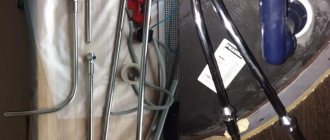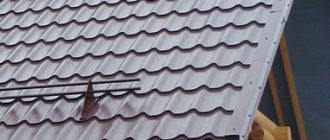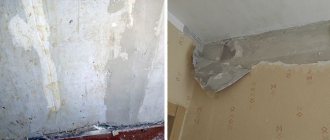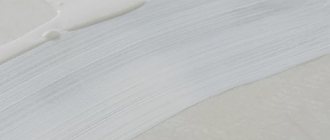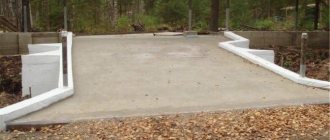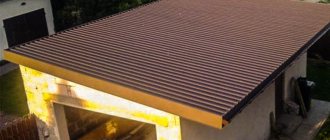In ancient times, a good Russian stove occupied half the hut and required attention and care. For the heat it gave off, it forced a person to work.
Well, dreams come true! We are talking about a revolutionary and most effective solution to date - the TeplEko heater, which quickly heats up, accumulating heat, and cools down for a long time, heating the room like a Russian stove.
Article on the topic Stove without wood. How does the TeplEko energy-saving heater work?
Types of devices
Engineers from various companies successfully cope with the task of creating devices that do not require the installation of a chimney. All of them have their own advantages and disadvantages, individual appearance and unique functionality. The cost of such products also plays an important role, since for many people such fireplaces go far beyond the previously allocated budget.
In specialized stores you can find the following types:
- Electrical;
- Ecological (biofuel stoves);
- Wood-burning (one caveat - not a chimney is used, but a chimney).
According to the material of manufacture:
- Tiled stoves;
- Brick;
- Metal devices.
If you want to furnish your home quickly and on a budget, then you are guaranteed to find a suitable solution among these devices. Everything will depend on financial capabilities and individual preferences.
What type of wood is best for firewood?
Different types of wood differ from each other in their calorific value and combustion characteristics. In this regard, when choosing fuel, you need to understand the performance characteristics of firewood.
- Pine has a high combustion temperature. The reason for this is the high resin content. This rock suggests many voids where tar deposits are present. When burning, they produce micro-explosions, sparks and ignited pieces of wood fly away.
- Spruce is less efficient in a firebox than pine. It contains less resins. Splitting wood is easy, but when burning the tree smolders and smokes. These conifers can be used for heating only in extreme cases.
- Alder. The main feature is the ability to burn without forming soot. At the same time, during combustion, deposits in the chimney will also be burned out. Such characteristics are unique to aspen.
- Poplar. It burns out quickly without providing enough heat. It should not be used to heat a bathhouse, but it is quite suitable for a home.
- Birch. Burns hotter than beech with acacia and oak. But there is also a drawback, and a significant one. It is necessary that there is sufficient air flow into the combustion chamber. Otherwise, there will be no heat, but only tar and smoke on the walls of the chimney.
- Oak. It is distinguished by its high density and ability to release heat. Its characteristics are similar to ash and also resemble beech. Oak wood is quite heavy when splitting.
- Maple. Its wood burns quickly without forming coals, as a result, there is a need to constantly add fuel. It's like burning linden wood.
- Apple trees. Like other fruit species, it pricks well and produces enough heat when burning. Apple firewood is also preferred because of the pleasant smell in the room.
Here's what else the stove maker said.
Profit without competitors: chinchilla breeding as a business - is it worth opening
Falling Behind Others: Signs You're Not Fitting in with the Office Work Culture
How to green your home office space: you can do it in different styles
Biofireplaces
Excellent stoves for a summer cottage without a chimney can be found in a wide range of bifireplaces. These solutions appeared on the wide market relatively recently, but in a short time such models managed to earn the attention of a large number of customers.
The main operating principle of biofireplaces lies in the use of special fuel, which burns without smoke, soot and combustion products. All its components burn completely, which is the reason for the name of the fireplace.
The device has a special compartment where a certain amount of fuel is located. The total volume is enough for 5-8 hours of continuous operation, however, more accurate numbers can be obtained from the technical data sheet, since everything depends on the model. In more expensive biofireplaces, special reflectors are installed to concentrate thermal energy.
In the Russian Federation and CIS countries, the following manufacturers of biofireplaces have gained the greatest popularity:
- ZFire;
- BioKamino;
- Kratki;
- Planika;
- Silver Smith;
- WildFlame;
- Bioheat.
As you can see, the choice is really large, so spend a few hours of your personal time to choose the best heating devices without a chimney!
Peat briquettes
Peat is a natural material consisting of rotted plant remains, containing up to 60% carbon. Peat is formed in a swamp and contains water inside, so it must be dried. Dry peat crumbles easily and becomes inconvenient to use. There is a way out - peat is mixed with sawdust and pressed into briquettes - dense dark brown bricks.
Fuel briquettes are increasingly used in stoves with regular air supply. The ash obtained from their combustion can be used as a mineral fertilizer, as it contains large amounts of potassium and phosphorus.
Advantages of peat fields:
- — is an absolutely natural bioproduct, does not emit toxic substances when burned;
- — safety of use - does not spark when burning;
- — compact storage (compared to firewood and coal)
- - acceptable price.
The disadvantages include:
- — low heat transfer;
- — peat is highly flammable, so it should be stored away from fire and heating appliances
REFERENCE:
The combustion time of peat briquettes depends on the moisture content of the fuel, the room temperature and the traction force of the furnace equipment.
One of the manufacturers of affordable peat briquettes is NESTRO. Their product is very economical: a ton of peat with a volume of 1.5 cubic meters. m corresponds to 2.5 tons of coal and 8 cubic meters of traditional chopped firewood.
Electric fireplaces
Specialized online stores offer a wide range of electric fireplaces that not only do not have a chimney, but do not even require classic fuel!
Electric fireplaces have gained very wide popularity throughout the country, as they do not have all the disadvantages of classic fireplaces. Modern devices simulate the effect of a burning flame, and heat is released due to the built-in heating element.
The devices have an elegant appearance, a large number of settings, and are also quite compact and convenient. There is a place for such fireplaces not only in a country house or cottage, but even in a residential apartment. Be sure that you will highly appreciate such a fireplace!
The most common and accessible manufacturers include the following companies:
- Europe Deluxe;
- Sheraton;
- Acadian;
- April;
- Real-Flame;
- Royal Flame and many others.
What is best to use for cleaning a chimney?
Chimney maintenance needs to be done periodically. Soot and resin deposits are removed from it. There are following reasons for this:
- The internal lumen becomes overgrown, causing traction to deteriorate and, accordingly, heat transfer decreases.
- If there is insufficient draft in the chimney, then a reverse draft effect may occur. Instead of going outside, the smoke will return indoors, which is the cause of carbon monoxide poisoning.
- Having reached a critical level, the soot ignites. Essentially, a micro-explosion occurs inside the chimney. During combustion, a lot of heat is released and heating occurs up to 1200 ° C. Then the chimney requires major repairs.
To prevent the condition of the chimney, among other things, in case of small deposits, burn aspen or alder firewood. The oven needs to be heated thoroughly. In addition to firewood, briquettes that have a special chemical composition are also used. However, if there are large soot deposits inside the chimney, burning off the tar will not help. Then mechanical cleaning of pipes is inevitable.
Tiled stoves
Tile stoves are the most expensive, sophisticated and beautiful models of fireplaces and stoves available today. They are purchased extremely rarely, since their price and complexity of construction/installation are extremely high.
The main feature of such stoves is the use of expensive tiles and glaze, which makes them affordable only to extremely wealthy people. The average cost is rarely below ten thousand euros.
If you really want to install a tiled stove in your home, then the products of the following companies will suit you:
- Panonie;
- Bavaria;
- Britannia;
- Florence;
What are the alternatives?
In addition to the types of wood listed above, peat briquettes are popular. Their advantage is that they do not need to be chopped, dried or otherwise prepared for burning.
Sawdust can be used instead of lump wood. But you still need firewood. With their help, kindling is carried out, followed by sawdust, which should make up no more than a third of the total volume of fuel.
Metal stoves with chimney
Metal stoves are models that are most often made from high-quality alloys of cast iron and its analogues. In the past, such products were known as “potbelly stoves”, since they were first actively used in Western countries. Thanks to the development of industry, a wide selection of such models has appeared in our country.
The main advantages of such stoves without a chimney are their compactness and wide functionality, which is not limited to heating. Thanks to the presence of special niches, it is possible to cook food, dry clothes and much more.
An important feature is the need to install a chimney, which performs similar functions to the chimney, but has a simpler structure. The chimney is a hollow metal pipe that simply removes combustion products. There is no need for a complex device and additional components that protect the internal space.
The design of the metal stove is both simple and ingenious. The internal firebox has a space where fuel combustion directly occurs. This section is practically no different from the classic firebox. Around it there is a large number of semi-closed tubes that contain air. As the fuel burns, it heats up, allowing thermal energy to be stored, which significantly improves energy efficiency.
We should not forget about the high heat capacity of cast iron, from which such stoves are usually made. It cools extremely slowly, which allows you to forget about the problem of firing the stove at night - the metal gradually cools down over 8-10 hours. All this is extremely convenient in the format of using a stove in the country or in a country house.
The product has a pleasant appearance and is suitable for many design trends. Forget about looking like a nightmare legacy of the past - many models have a large number of forged elements that make chimneyless metal stoves a real work of art.
The number of manufacturers of metal furnaces is extremely large, so customers are forced to focus on the assortment that is available and the purchasing budget. If you want to purchase a truly high-quality, durable and visually attractive product, then you should pay attention to the products of the following manufacturers:
- EdilCamin (Italy);
- Corradi (Italy);
- Thorma (Slovakia);
- Biokaitra (Lithuania);
- Amur (Russia);
- Brandenburg (Russia);
- ABX Arktis (Czech Republic).
As you can note, the choice is really wide, so everyone will find a suitable option for themselves!
Pellets
Lighting a stove with pellets is the newest type of heating.
Pellets are cylindrical granules of the same size made from wood waste. In a good way, to effectively heat a room with pellets you need a special boiler. But to meet minimal needs, they can be used in a conventional wood-burning stove.
Advantages of pellet heating:
- — environmentally friendly fuel, contains no more than 3% ash;
- — granules do not contain dust and spores, are less susceptible to spontaneous combustion and do not cause allergies;
- — characterized by high dryness and greater density, which leads to high heat transfer;
- - ease of storage
The main disadvantage of pellets is their high price.
Brick stoves without chimney
Brick stoves without a chimney are a fantasy for many, but such designs are still possible, but this imposes serious restrictions on their scope. Due to the high probability of combustion products escaping into the surrounding area, such models are installed outdoors: in the garden or surrounding area.
Such brick and stone stoves are also known as “black sauna stoves”, since during their operation a large amount of burning and soot is formed, which is deposited on the walls of the firebox. It doesn’t make the slightest sense to clean off such deposits, since over time the result will be the same. Reduced emissions are achieved through complete combustion of all components in the furnace under high temperature.
Black baths and stoves for them have been actively used for thousands of years, so modern projects are based on the buildings that were invented by our ancestors.
The most popular types of black sauna are:
- Chum or yurt;
- Half-dugouts;
- “Volznye” pits;
- Old Slavonic "origins".
There really are a lot of options, but most often they create dugouts and their analogues, as they have an authentic appearance and a pleasant atmosphere inside!
Coal
There are several types of coal, but for heating a house it is better to use anthracite - the so-called stone or brown coal. With minimal consumption, it has maximum heat transfer, long and uniform combustion, and emits a small amount of harmful combustion products. However, such coal is quite expensive, and it also takes a long time to ignite. Therefore, preference is increasingly given to long-flame coals, suitable for any solid fuel boilers.
When burning coal, the temperature inside the stove is much higher than when burning wood, the walls of the firebox must be reinforced with thicker sheets
The disadvantages of coal heating include:
- — without firewood you won’t be able to light coal;
- — the need to frequently add fuel, additional costs for waste disposal;
- - coal dust.
IMPORTANT:
When burning coal, a closed chimney damper saves heat. Be sure to keep an eye on the flame; when a blue color appears, open the damper slightly to prevent the room from filling with carbon monoxide.
Wood-fired heating boilers
Of course, today quite a lot of people consider wood-burning boilers to be a kind of relic of the past and wonder what could be the reason for using them to heat a house. In fact, there are several reasons. The main one is the inability to connect a gas pipe to the house (there is no gas main nearby) or the impossibility of supplying fuel of a different type (not firewood).
What heating is better for the home?
The use of electric boilers is excluded due to fairly stable power outages. And it turns out that heating a dacha with wood is the only real way to heat a house.
Vintage solid fuel boiler
How to heat correctly?
To reduce wood consumption and improve combustion, the stove maker advised doing the following:
- You need to put logs into the stove that are approximately 5 cm shorter in size than the length of the firebox. If, when preparing firewood, you make it approximately the same size, it will be much easier to burn.
- The logs are laid in such a way that there are gaps for air.
- Although the stove can, in principle, be heated with raw wood, this is fraught with the release of tar with smoke and in considerable quantities. In this regard, it is better to deal with dry fuel (no more than 25 percent humidity).
And finally - about how to start lighting the stove.
Analyze your anxiety: how to make decisions under stress
Emphasis on human psychology: how to increase sales via the Internet
The main thing is minimalism: how to apply Marie Kondo's approach to improve your business
The advantage of heating with wood
In fact, wood heating is quite effective. And it should be noted that it is in no way inferior to modern types of fuel. And compared to some of them, it has a number of significant advantages:
- Using a wood stove in a country house is not just a way to heat the house. On such a stove you can easily cook exactly the same dinner as on the stove.
- a wood stove heats up very quickly - and accordingly, it also quickly begins to release heat into the room.
- Even if you decide to build a new wood-burning stove in your country house, its creation will take much less time than installing a full-fledged heating system. In addition, building a furnace will cost you much less.
However, there are several other most important advantages of wood heating. First of all, this is the cost of the fuel itself. There are often cases when dacha owners independently prepare firewood by cutting down dried trees, thereby independently regulating the consumption of firewood for heating the house. But even if you buy firewood, their cost is very low.
How to choose heating for a country house?
Firewood collection
Well, the most important advantage of such fuel as firewood is that it is one of the most environmentally friendly types. That is, the smoke from such a stove does not cause any harm to humans or the environment.
Particular attention should be paid to the purchase and storage of firewood. First of all, experts recommend purchasing firewood that was harvested two years ago - this time was enough for the wood to dry out properly and the wood density for heating.
In addition, certain storage conditions must be observed. In particular, firewood should be stored in a well-ventilated area with a minimum level of importance. Under no circumstances should water come into contact with the firewood - otherwise it will have an extremely negative effect on the combustion process.
One of the ways to store firewood
If the question arises about purchasing a solid fuel boiler that will be used at the dacha, the most rational option is to use a model with a long burning time - otherwise you will have to visit the boiler quite often to add firewood to the firebox.
In fact, boilers heating with wood appeared quite a long time ago. But the simplicity and reliability of operation still makes them very popular. Of course, modern solid fuel boilers have undergone a number of changes - their combustion chambers have become more spacious, and sometimes they are supplemented with electric heating elements. In addition, the modern market provides universal heating boilers that can operate alternately on two different types of fuel (for example, coal and wood).
Recently, external boilers have been very popular. Installed outside the building, they allow you to connect several buildings to heat your home with wood.
In addition, with the help of such equipment you can organize the supply of hot water to the house. Today, one of the best manufacturers of external boilers is the Central Boiler company, whose products are distinguished by high quality and reliability.
External solid fuel wood boiler
Disadvantages of wood heating
Using a boiler that heats a country house with wood has a number of advantages, the main ones being the environmental friendliness and availability of this type of fuel. However, such a system also has a number of disadvantages. In particular:
- In order to achieve a comfortable temperature in the house and maintain it at the proper level, you should spend a fairly large amount of firewood. That is, despite the cheapness of this type of fuel, the rate of wood consumption for heating is quite high. Therefore, in the end result, the benefit is not that great. Before you decide to install such a system, you need to calculate the firewood for heating.
- This heating system requires constant monitoring. After all, even if you fill the firebox with wood as much as possible, it will only last for three hours. That is, after a certain time you will need to replenish the amount of firewood in the firebox. But at night it’s not very convenient.
- Wood boilers have a relatively low calorific value, which, in turn, leads to a decrease in efficiency (70-80%).
- To increase the level of efficiency, wood-burning boilers are made with an increased firebox. And given that this product is made of cast iron, the boiler turns out to be very heavy and massive, which significantly complicates its transportation and installation.
Modern solid fuel boiler with an increased firebox
How to make BKP with your own hands
The only secret of such a stove is the sealed firebox door. It can be of any shape, but, as a rule, it is made round or square.
1. From a pipe with a diameter of 200–350 mm (wall 2–4 mm), cut a ring 50–100 mm wide. Align and clean the edges. This element is called a “collar”.
2. From a sheet of 3–4 mm, cut out a circle exactly along the outer diameter of the collar. This will be the door.
3. Based on the dimensions of the furnace, we select the diameter of the air supply channel (air channel - VK). We can conditionally divide household-use BCPs into 2 categories - small (0.13–0.18 cubic meters) and medium (0.18–0.25 cubic meters). For small ones, a diameter of 76 mm will be enough, for medium ones - 102 mm. The size of rectangular channels is calculated through the cross-sectional area S = Pr2.
4. The VC must have an adjusting valve or gate.
Damper:
The manufacturing process of the damper is more complex, but in terms of convenience and effect it has no advantages over the above-mentioned damper. It can be copied from a factory copy.
5. Cut a hole in the door for the VK.
Attention! The door opening should not be smaller than the diameter of the VC. The channel itself should be shifted down from the center and its lower edge should be located 20–30 mm from the door cuff.
6. From a strip 2–3 mm thick and 20–30 mm wide, take a segment equal to the circumference of the door.
7. We weld the strip overlay around the circumference of the door.
8. We make a loop device. To do this, in four sections of 60–70 mm strip, we drill one 6–8 mm hole from the edge. We put them on a flat wire pin 6–8 mm long, 100–150 mm long. We weld the strips in pairs to the door and cuff of the firebox.
9. We make a locking device. This element can be arbitrary - an inventory box lock, a motorcycle chain tensioner, or any type of eccentric with a handle. It is convenient and reliable to use a movable threaded tightening. A lock from a milk can will do. The main task is to ensure that the door is pressed against the cuff of the firebox.
10. In the corner on the door formed by the cuff, we place an asbestos cord on a heat-resistant sealant.
Such a hatch can be installed in any potbelly stove or steel tank, resulting in an effective stove. It should be located 100 mm from the bottom of the firebox. That is, there must be at least 10 cm between the bottom of the loading hatch and the bottom of the oven.
The main and most important rule for operating the BKP: at the bottom of the firebox there must always be a layer of ash at least 80 mm thick. Otherwise, the bottom will heat up and soon burn out.
Simple and convenient chimney
The installation of a horizontal channel for exhaust gases is not always convenient, especially when servicing the furnace. We will give a way to arrange it in a simpler and more convenient form:
Now any pipe can be installed in this cuff, and dry clay should be filled and compacted into the bosom (the gap formed by the difference in diameters). This will provide reliable protection against smoke leakage and simplify dismantling for maintenance.
Let us remember that one of the functions of a “basic” potbelly stove is the ability to heat water and cook food on the upper wall of the firebox. The BKP with the Buleryan door retains this property - just load more fuel and fully open the VK.
A furnace bulkhead can be the next stage in the modernization of a grateless potbelly stove. This is a heat sink in the form of a thick (5–8 mm) sheet of metal, located immediately under the chimney and covering 2/3 of the firebox area.
Effect. An even greater slowdown in the flow of hot gas. Additional heat accumulation indoors.
To fully implement a long-burning BCP as a stove, you need to add one more element - an injector. This is a hollow tube (or several) with holes inside the firebox, which is located in the front of the stove at the level of the center of the chimney channel.
1 - combustion bulkhead; 2 - injection tubes
Effect. The injector is needed to feed the flame “tongues” with air and afterburn the fuel. It is located in a place where the combustion process has not yet been completed, and smoke formation is about to begin. By supplying oxygen (air) to this point, we fuel the combustion reaction, the heat from which warms the upper wall. This principle is also used in modern pyrolysis solid fuel boilers.
The injector “automatically” comes into action upon contact with a flame. This becomes possible only if the hearth is located in the front of the firebox. In the long-burning mode (when the hearth is closer to the center of the firebox), it remains unused.
</p><p>
How should you light the stove?
Lighting a stove can be considered a kind of art. If you do this incorrectly, as well as ineptly maintain the fire, then it will be impossible to achieve a temperature in the firebox of more than 40-50 ° C, and this is not enough to heat the room. Kindling involves the following steps:
- Preparation. It is necessary to remove ash and coals from the ash chamber and clean the grate. Then the traction is checked. This is done by lighting paper or a candle. The firebox should draw flames into itself.
- Laying the first of the fuel layers. A seed is prepared. A couple of bars need to be placed, moving them apart by 15 cm. Insert crumpled paper between them, onto which a pile of wood chips, shavings, and sawdust is poured. You need to put a couple more logs diagonally on top.
- Ignition. Use a torch or lighter to ignite the seed. The use of flammable liquids is prohibited. As for dry fuel, it is allowed with wet firewood. Ignition is carried out by opening the ash pan, waiting for a buzz to appear. The noise is an indication of a fire breaking out. The damper does not need to be closed completely.
- Additional loading of firewood is carried out 15 minutes after igniting the seed. And then the logs need to be added every 2 hours, until the temperature reaches the required level.
Found a violation? Report content

